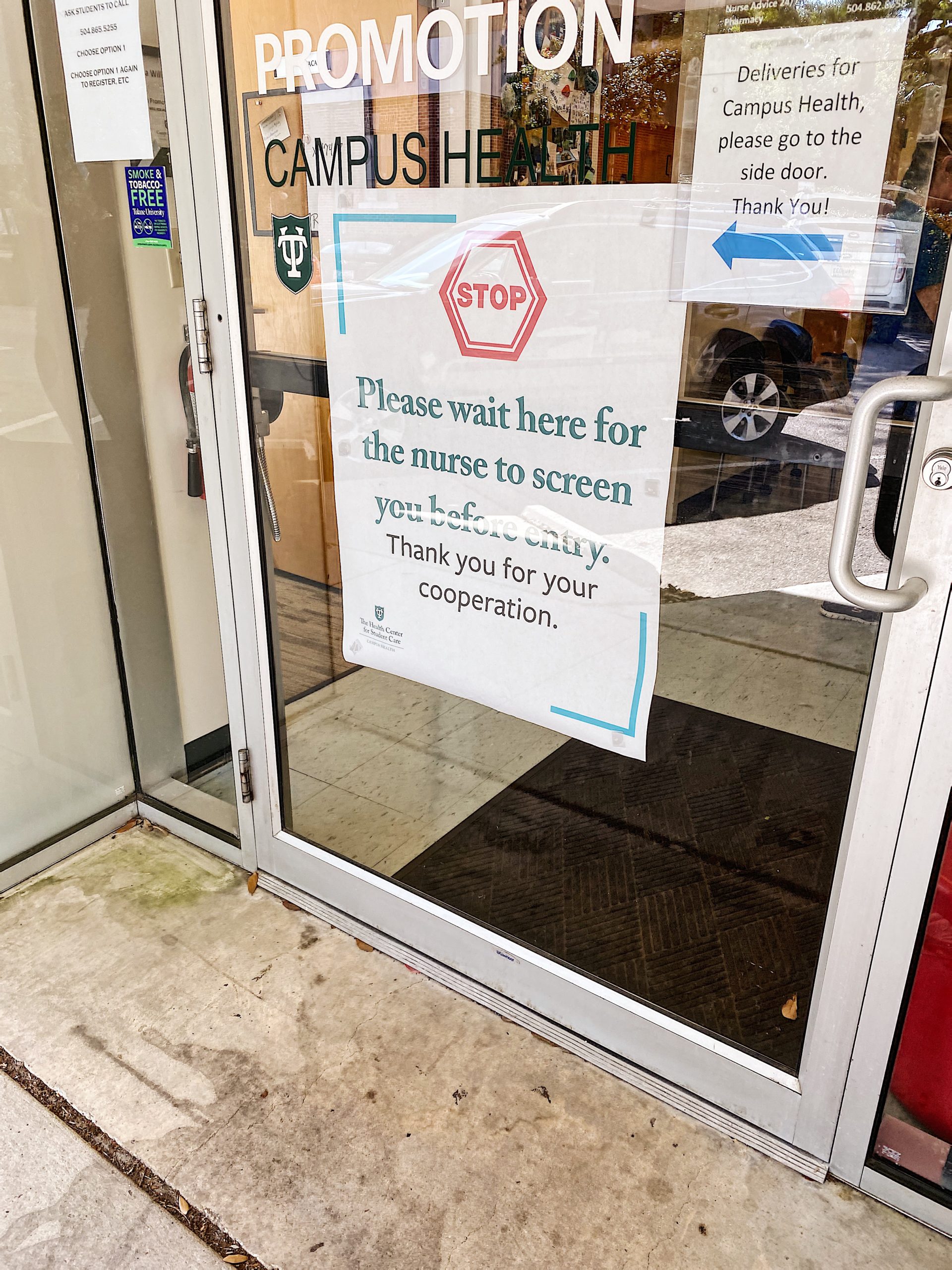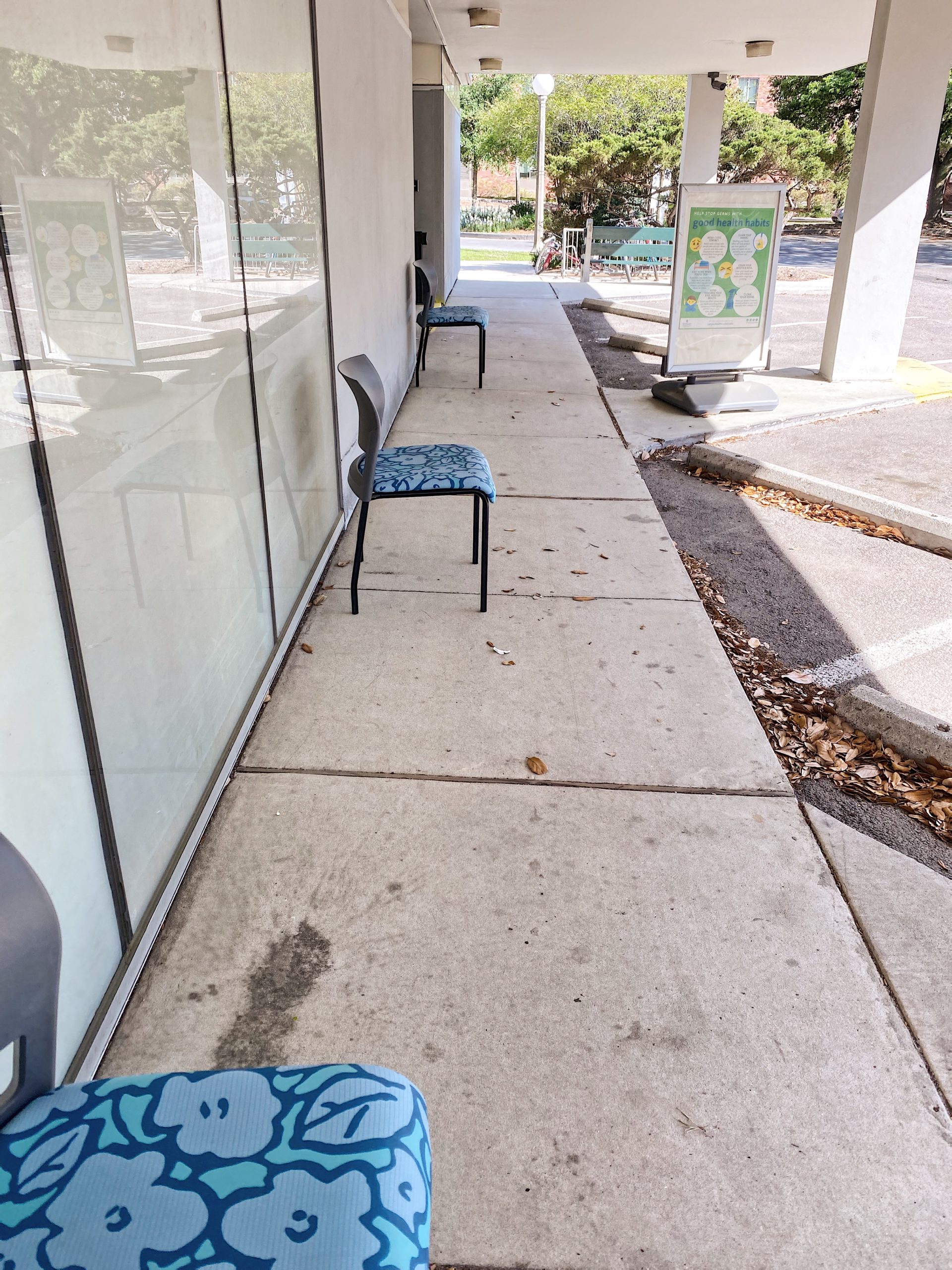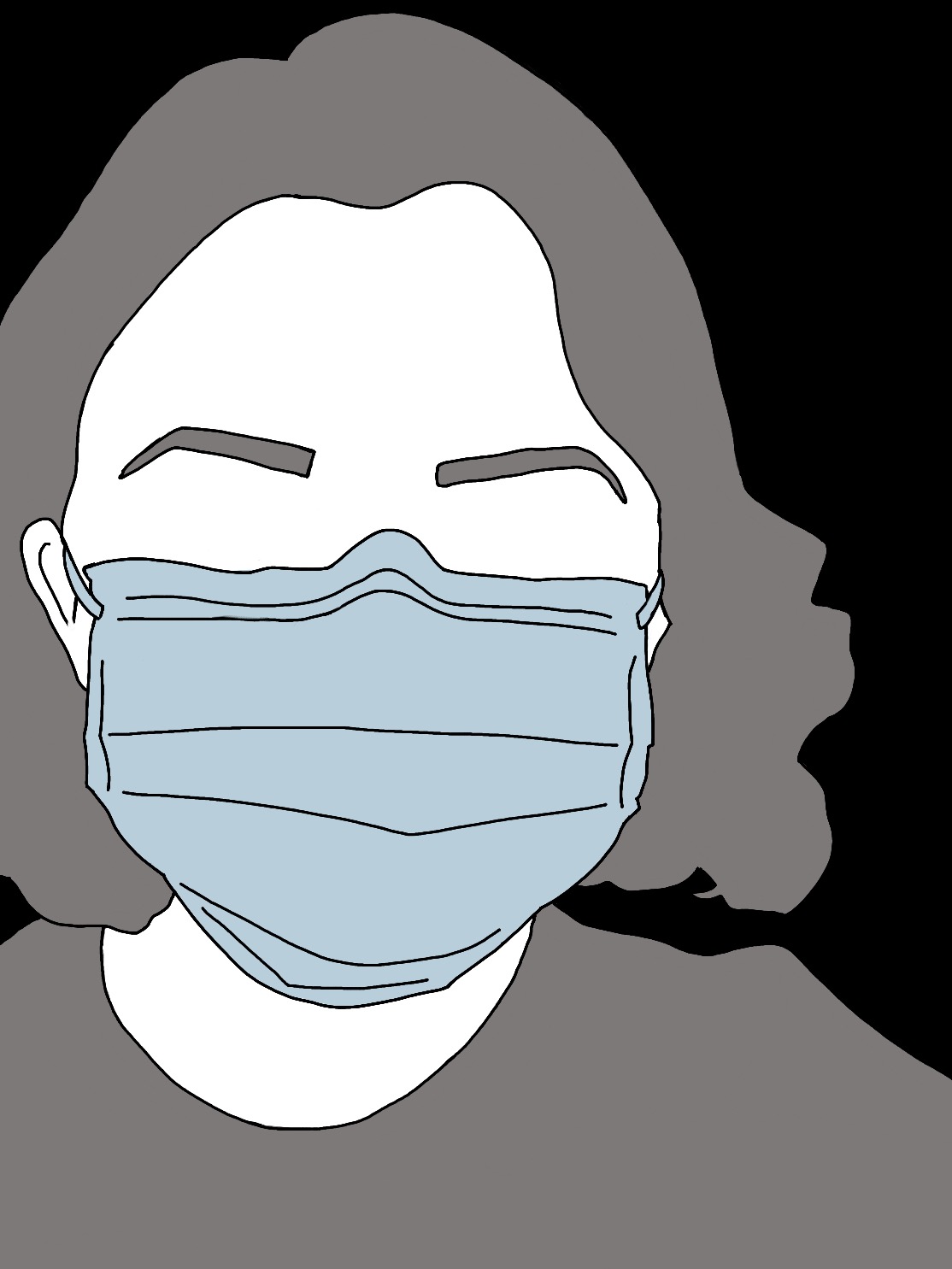You’ve heard the laundry list of symptoms so many times by now that you know them by heart: fever, dry cough, shortness of breath, and more. What happens when you start to experience those symptoms? Deciding how to go about getting tested can seem stressful and overwhelming. Unfortunately, I have first-hand experience, so let me break it down for you.
Right now in New Orleans you have a few options. As a current Tulane student still living in New Orleans, I was able to visit the campus Health Center in order to have my symptoms assessed. The city also offers drive through testing, and recently one organization began to offer in-home testing. Your last resort should be the emergency room. Below you will find these options explored in more depth.

Sign outside of the Tulane Health Center (Photo credit: Kaley Fisher)
My experience at the Health Center felt like something out of a sci-fi movie. I had started feeling sick on a Thursday, and made it into the health center the next Monday. I called ahead, and when I arrived I was welcomed by a big sign telling me to wait outside, and three chairs lined up against the building, each 6 feet apart. A nurse spotted me and greeted me outside, donning full protective gear. Here she took my vitals and wrote down my symptoms. I then was taken into a small room with a phone, and I had to wait for the doctor to call and discuss further. After chatting with the doctor, she entered my room and tested me for the flu and for COVID-19, both of which required swabs to be shoved way up my nose. The flu results came back in 10 minutes: negative. The doctor told me that the COVID-19 test results should come back in 3-7 days, but may take longer. Louisiana is experiencing a backlog of tests right now. Until faster testing methods are more widespread, expect test results to take a while to return.
Another method, accessible to more than just Tulane students, is drive through testing. As of right now, there are 3 locations offering drive through tests in New Orleans. There are obvious benefits to this. The sick person stays in their car and doesn’t run the risk of infecting other patients in the hospital. Additionally, your insurance is required to cover the cost of the test, and those who are uninsured will be covered by federal funding. However, getting to the testing location may be an issue if you don’t have someone who can drive you. Seriously ill people may not feel comfortable behind the wheel, or may not even be able to drive, which prevents them from accessing this kind of testing. There are also limited numbers of tests. Each location has a cap of 250 tests per day, and they often run out of tests after only a few hours. Still, if your symptoms aren’t life-threatening yet still meet CDC guidelines, drive through testing is your best bet.

Makeshift waiting room: social distancing edition (Photo credit: Kaley Fisher)
A new option for coronavirus testing came to New Orleans last week. An organization known as Ready Responders began to offer in-home testing to residents, acting like a traditional house call from a doctor. This option is fantastic for high-risk patients who worry about leaving their house. By staying in your home you remove the risk of coming in contact with other people at the doctor’s office or other testing locations. The paramedic enters your house in full protective gear and administers the test only if your symptoms meet the CDC guidelines. The tests administered from this method take the same amount of time to get analyzed as all of the other methods, which unfortunately means that you’ll most likely have to wait a week or more to hear back.
As stated earlier, and as the doctor at the Tulane Health Center advised me, your last resort should be to visit the emergency room. If your symptoms are not severe you should use one of the alternate methods instead of taking emergency room doctors’ attention away from seriously ill patients. The doctor I saw at the Tulane Health Center advised me to stay away from emergency rooms unless my breathing became impaired. From what the doctor had seen, once breathing becomes impaired the virus may progress quickly and become critical, and so it is best to be seen by a doctor before it gets to that point. If you are unsure if your symptoms warrant an emergency room visit, call your primary care doctor or a state hotline to get an official’s advice.

“Pandemic Self Portrait” by Kaley Fisher
After 12 long days of waiting, I finally received my COVID-19 test results back: negative. The doctor I had seen was fairly convinced that I had it, so these results came as a surprise to me. True fear began to wash over me for the first time since this pandemic began. Prior to getting sick, I felt as though I didn’t have anything to worry about. I practiced social distancing and rarely left my house, and I always washed my hands. I’m young and healthy and thought I’d be fine, and then I got really sick. It was a virus of some sort, but not the flu or COVID-19. Somehow I caught a bad cold, but I can take solace in the fact that I did everything right, which included getting myself tested when I presented symptoms. I urge you all to do the same.
 NOLAbeings Multimedia artist Claire Bangser created NOLAbeings as a portrait-based story project that marries...
NOLAbeings Multimedia artist Claire Bangser created NOLAbeings as a portrait-based story project that marries...  Voodoo in New Orleans: Reviving history: New Orleans fortune telling This article takes a deep dive into the history of Voodoo in New Orleans, its hybridization with Catholicism, and its present-day place in the city's culture. The author visits fortune-tellers in the French Quarter, using their guidance as a tool for introspection rather than a deterministic predictor of the future. Through her experiences in New Orleans, the author feels a mystical connection to both the past and the future.
Voodoo in New Orleans: Reviving history: New Orleans fortune telling This article takes a deep dive into the history of Voodoo in New Orleans, its hybridization with Catholicism, and its present-day place in the city's culture. The author visits fortune-tellers in the French Quarter, using their guidance as a tool for introspection rather than a deterministic predictor of the future. Through her experiences in New Orleans, the author feels a mystical connection to both the past and the future. 